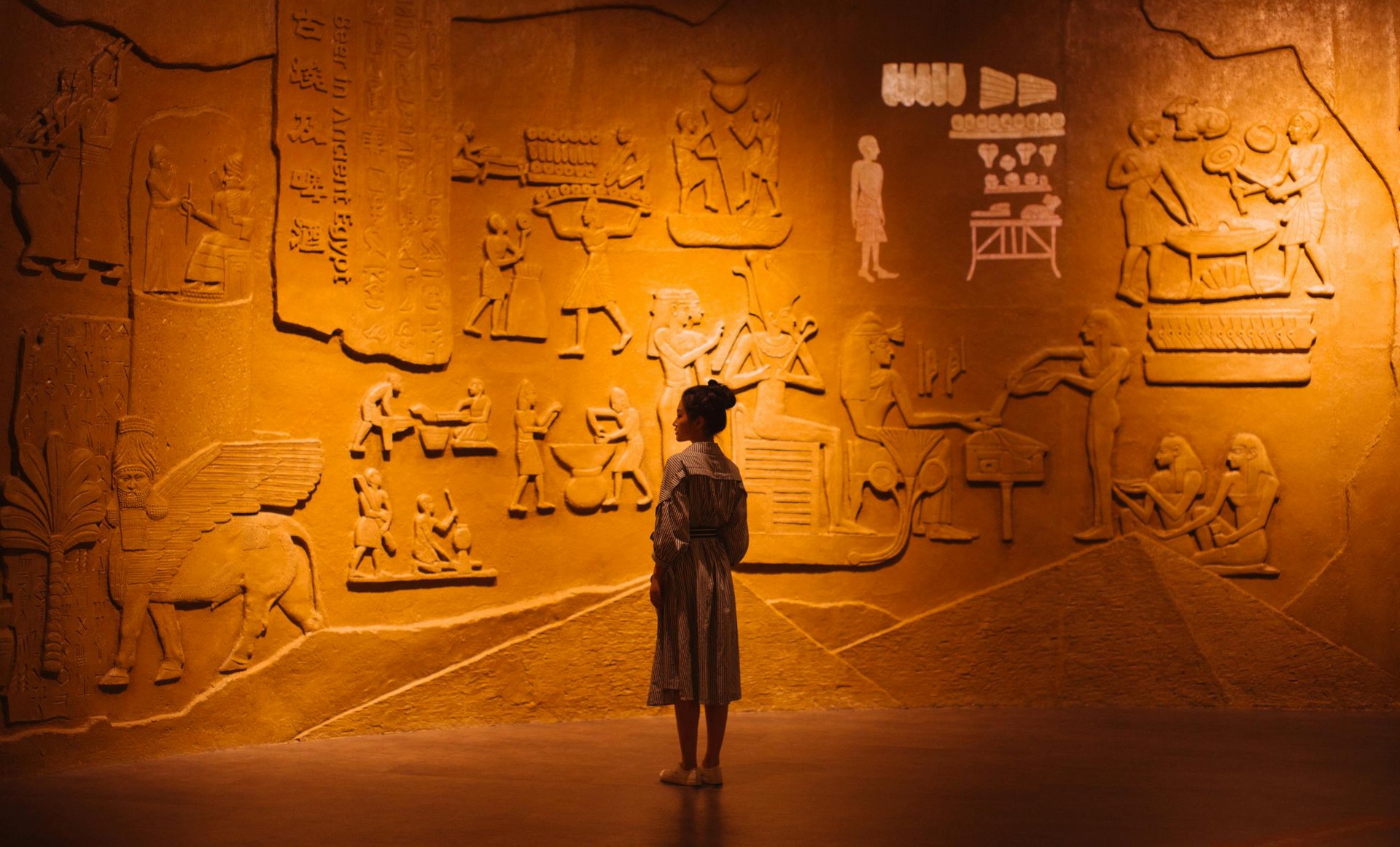
Rise and Fall of Ancient Egyptian Dynasties: A Comprehensive Timeline
HISTORY OF EGYPT
1/25/20253 min read
Ancient Egypt’s history spans over 3,000 years, filled with incredible achievements, powerful rulers, and dramatic changes. From the unification of Upper and Lower Egypt to the collapse of the New Kingdom, the dynasties of Egypt shaped one of the most fascinating civilizations in history. In this blog, we’ll dive into the rise and fall of ancient Egyptian dynasties through a comprehensive timeline. Whether you’re a teacher planning a lesson or a student hungry for knowledge, this guide will bring ancient history to life!
What Are Egyptian Dynasties?
A dynasty in ancient Egypt was a series of rulers from the same family or lineage. These dynasties were grouped into three major periods:
The Old Kingdom (2686–2181 BCE): Known as the "Age of the Pyramids."
The Middle Kingdom (2055–1650 BCE): The "Golden Age" of art and literature.
The New Kingdom (1550–1070 BCE): Egypt’s imperial zenith.
These periods are separated by “Intermediate Periods” marked by political instability and invasions.
1. Early Dynastic Period (c. 3100–2686 BCE)
Unification of Egypt: Pharaoh Narmer (possibly the legendary King Menes) united Upper and Lower Egypt around 3100 BCE, marking the start of the First Dynasty.
Key Achievements: The foundations of Egyptian culture, including hieroglyphics and monumental architecture, were laid during this time.
Dynasties: The First and Second Dynasties saw rulers solidify their power and expand their influence.
2. The Old Kingdom (2686–2181 BCE): Age of the Pyramids
Iconic Structures: The Old Kingdom is synonymous with the construction of the pyramids at Giza. Pharaohs like Khufu, Khafre, and Menkaure left enduring legacies.
Centralized Power: The pharaoh was seen as a god-king, and Egypt experienced stability and prosperity.
Downfall: A combination of weak rulers, economic strain, and drought led to the First Intermediate Period.
3. The First Intermediate Period (2181–2055 BCE): A Time of Chaos
Political Fragmentation: Egypt was divided into rival factions, with local governors (nomarchs) asserting control.
Cultural Decline: Art and architecture suffered as central authority collapsed.
Transition to the Middle Kingdom: Pharaoh Mentuhotep II of Thebes reunified Egypt, ending the chaos and beginning the Middle Kingdom.
4. The Middle Kingdom (2055–1650 BCE): Egypt’s Renaissance
Stability Restored: The Middle Kingdom saw strong leadership, with pharaohs focusing on rebuilding infrastructure and boosting the economy.
Notable Rulers: Mentuhotep II, Senusret III, and Amenemhat I were instrumental in expanding Egypt’s influence.
Art and Literature: This period produced masterpieces like "The Tale of Sinuhe" and stunning jewelry and sculptures.
Downfall: Invasions by the Hyksos, a Semitic people, ushered in the Second Intermediate Period.
5. The Second Intermediate Period (1650–1550 BCE): Foreign Rule
Hyksos Invasion: The Hyksos introduced advanced military technology like chariots and composite bows.
Theban Resistance: Native Egyptian rulers in Thebes, such as Seqenenre Tao, began pushing back against Hyksos dominance.
Path to the New Kingdom: The expulsion of the Hyksos by Ahmose I marked the beginning of Egypt’s most powerful era.
6. The New Kingdom (1550–1070 BCE): Egypt’s Golden Age
Empire Building: The New Kingdom saw Egypt become a global superpower, with territories stretching into Nubia and the Near East.
Famous Pharaohs:
Hatshepsut: A female pharaoh known for trade expeditions and monumental architecture.
Akhenaten: Introduced monotheistic worship of Aten but faced resistance.
Tutankhamun: Restored traditional practices after Akhenaten’s reign.
Ramses II: Known as "Ramses the Great," he led military campaigns and built iconic temples like Abu Simbel.
Downfall: Internal strife, corruption, and invasions by the Sea Peoples contributed to the end of the New Kingdom.
7. The Late Period (664–332 BCE): Egypt’s Final Stand
Foreign Domination: Assyrians, Persians, and eventually Greeks ruled Egypt during this period.
Alexander the Great: In 332 BCE, Alexander conquered Egypt, ending its dynastic era and beginning the Ptolemaic period.
Legacy: The fall of ancient Egyptian dynasties didn’t erase their cultural and architectural achievements, which continue to inspire.
8. Why Did Egyptian Dynasties Fall?
The decline of Egyptian dynasties can be attributed to several factors:
Political Instability: Weak pharaohs and succession disputes undermined authority.
Economic Challenges: Poor harvests, resource depletion, and military expenses strained the economy.
Foreign Invasions: Egypt’s wealth and strategic location made it a target for invaders.
Environmental Changes: Climate shifts and droughts disrupted agriculture, the lifeblood of civilization.
Lessons from Ancient Egyptian Dynasties
The rise and fall of ancient Egyptian dynasties offer valuable insights into leadership, resilience, and innovation. For teachers and students, these stories bring history to life and show the importance of adaptability in the face of challenges.
Discover Ancient Egypt with Our E-Learning Platform
Want to explore ancient Egyptian dynasties in greater depth? Our e-learning platform offers interactive lessons, engaging videos, and comprehensive resources tailored for teachers and students of 2024 and beyond. Dive into the timeline of Egypt’s fascinating history and bring the past to life in your classroom or personal studies. Visit our website today and start your journey into the captivating world of ancient Egypt!
